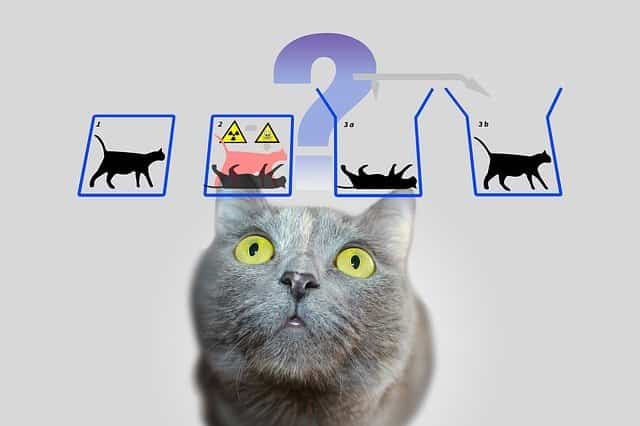
Schrodinger’s Cat: a Quantum Problem
Today, cats accompany us both at home and on the street, while walking in the park or garden. Well, what would your reaction be if one of our cute little friends said that one of them is “living and not living” at the same time? You would probably ask if you were drunk and think the other person was making fun of you. However, the situation is more complex than anticipated. Such a cat is possible in theory, although not in reality. More precisely, the cat is a metaphor, of course, an object made up to embody the event.
Like Yaşar, the poor character depicted in the novel “Yaşar neither lives nor does not live” by Turkish writer Aziz Nesin, we will examine a cat that is both living and non-living at the same time, but first let’s talk about who Schrödinger is.
Erwin Schrödinger
Erwin Rudolf Josef Alexander Schrödinger is a physicist born in Vienna in 1887. Schrödinger, one of the founders of quantum physics, was awarded the Nobel Prize in Physics with Paul Dirac in 1933.

There is an “intellectual experiment” identified with the name of this Austrian scientist, who founded his physics studies on classical experiments, which still cannot be solved by current modern scientific criteria, only guesses are made on it. The reason for this is that quantum physics, which works with indeterministic principles, is still unknowable. Let’s see what this thought experiment was!

Imagine there is a cat inside a closed box. Let’s assume that a chemical substance such as Uranium, Thorium, which emits a beta particle decay in the box this cat is in, triggers a mechanism as a reaction. If the beta particle hits the detector, the poison in the bottle will kill the cat, otherwise, the cat will survive. So as long as we don’t look inside the box in any way as an observer, there is a half, 50% – 50% chance of the cat surviving or dying. When the observer opens the box, one possibility collapses and the other possibility comes true. This means that the cat is both alive and dead until the box is opened and observed.
Yes, it’s a little confusing. But quantum physics is full of entanglement!
This situation, which pushes the limits of logic, is an indication of the movement of subatomic particles in a completely “random” direction. According to Heisenberg’s Uncertainty Principle, it is not possible to locate the electrons that surround the atom, which is the smallest building block of matter. An electron particle can theoretically exist almost anywhere in the universe at the same time. The atomic models shown to us in school do not actually reflect the actual atomic shape.

Quantum Physics Logic: The Falling Tree Problem
Quantum physics is very different from “classical physics”, where every action and occurrence can be expressed with certain criteria. Here, instead of the physics rules we know, we encounter random actions. Similar to this cat experiment, let’s talk about a question that both philosophers and quantum physicists are considering. Our question is: “Does a fallen tree make a sound in a place where there is no one?”
If your answer is clearly “yes” or “no”, think a little more. Do you think it’s possible for us to know for sure whether the fallen tree is making a sound in the absence of any observers?
The sound can be perceived as a result of the vibration waves sent by a frequency transmitter vibrating with the atoms in the air and hitting the receptors of the receiver. Therefore, it is very difficult to say whether a fallen tree makes a sound in a place where there is no observer. Looking at our past experiences, we can say “yes, it can sound”. When the tree fell, it “cracked!” makes a noise because… However, all of our experiences are based on our observations. We can deduce that a tree can make a sound because we have encountered this situation before. In this case, for now, we have to say “unknowable” for the answer to this problem, just as we cannot know without observing whether the cat inside the box is alive or dead.
